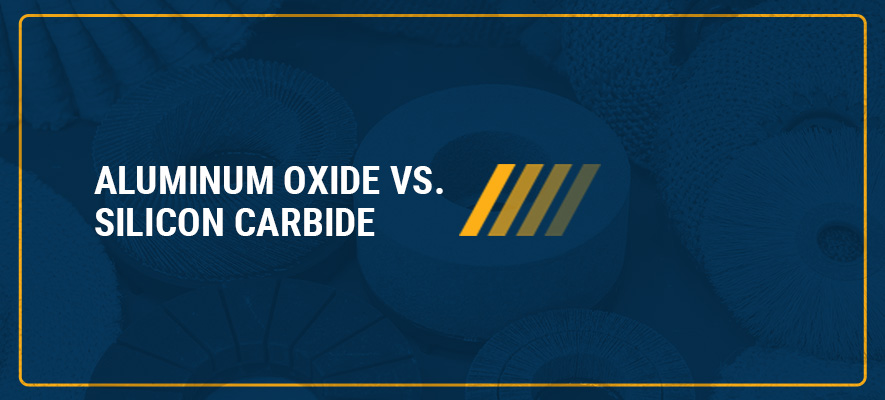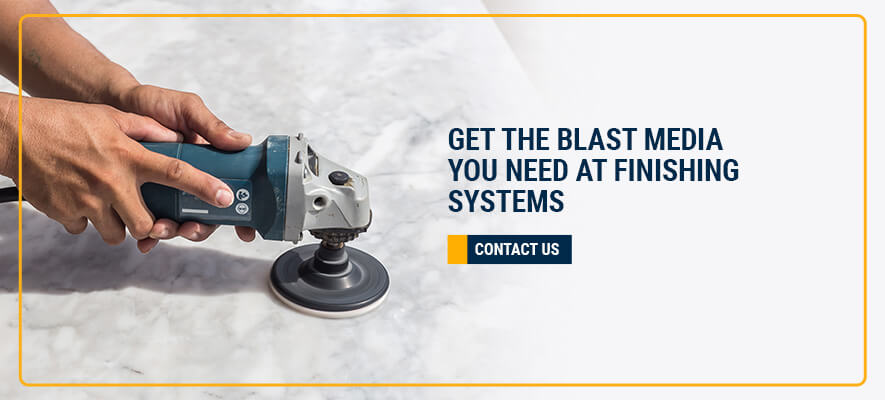Aluminum Oxide vs. Silicon Carbide

Aluminum Oxide vs. Silicon Carbide
Updated: November 24, 2023When it comes to surface preparation, blasting media plays a crucial role in stripping, cleaning, and polishing materials to achieve a professional finish. Two of the most commonly used abrasives are aluminum oxide and silicon carbide. While both are cost-effective and versatile, their unique properties make them more suitable for certain applications than others.
Aluminum Oxide Abrasives
Aluminum oxide is one of the most popular blasting media due to its affordability, durability, and wide range of applications. It’s particularly effective on painted surfaces, wood, and various metals. The abrasive comes in three main colors — pink, white, and brown — each with distinct characteristics and uses.
Pink and White
The white and pink forms of aluminum oxide are known for producing smoother finishes compared to the brown variety. White aluminum oxide is ideal for delicate tasks like working with wood or lacquered surfaces, as it generates less heat and performs well in precision applications. Pink aluminum oxide, on the other hand, is best suited for softer woods and sharpening operations. However, these colors tend to be less durable than the brown version.
Brown
Brown aluminum oxide is the go-to choice for harder materials. It offers excellent wear resistance, making it highly recyclable and cost-effective over time. Its grains are semifriable, meaning they self-sharpen as they break down, which helps maintain efficiency during use. Coarser grits remove larger burrs, while finer particles leave a smooth finish. This makes it an excellent option for general metal finishing and long-term use.
Silicon Carbide Abrasives
Silicon carbide is known for its extreme hardness and sharp edges, making it ideal for non-metallic materials such as glass, ceramics, stone, and plastics. Its high hardness allows it to etch surfaces effectively, preparing them for coatings or further finishing. However, this same hardness can lead to faster wear when used on softer materials or in extended blast cycles.
One of the key advantages of silicon carbide is its versatility. It can be used in both direct-pressure and suction-based blasting systems. It also pairs well with aluminum oxide in multi-step finishing processes — aluminum oxide for initial residue removal and silicon carbide for final polishing. This combination can help reduce wear on the more fragile silicon carbide particles while still achieving a smooth finish.
Silicon carbide is safe for use in wet or volatile environments, as it doesn’t produce static electricity or significant magnetism. It’s available in both friable and non-friable forms, offering flexibility depending on your application needs.
Which is Better for Grinding Steel?
When it comes to grinding steel, aluminum oxide is typically the better choice. Although silicon carbide is harder, it is also more brittle and tends to wear out quickly on hard surfaces. Using silicon carbide on steel may require multiple passes to see any real effect, making it less efficient. Brown aluminum oxide, in particular, is well-suited for steel due to its durability and ability to provide a smooth finish. You can follow up with pink aluminum oxide for a refined surface if needed.
Which is Better for Grinding Aluminum?
Aluminum is a soft metal that requires a balance between hardness and heat control. A combination of aluminum oxide and silicon carbide often works best. Silicon carbide is ideal for low-tensile strength metals like aluminum because it provides a fine finish without excessive heat generation. However, white aluminum oxide is also a great option for precise work on aluminum surfaces due to its lower heat output and smooth finish.
Choosing Between the Two
Your choice between aluminum oxide and silicon carbide depends largely on the material you're working with. For high-tensile strength materials like steel, bronze, or aluminum alloys, aluminum oxide is usually the better option. If you’re working with non-metallic or softer materials, silicon carbide might be more appropriate.
Using a combination of both abrasives is often recommended for precision finishing. This approach is especially useful in woodworking and metalworking projects where a smooth, even finish is required.

Get the Right Blast Media for Your Needs
If you're looking for high-quality blasting media tailored to your specific applications, Finishing Systems has you covered. We offer both aluminum oxide and silicon carbide in a variety of types, including friable, semi-friable, and standard options. Whether you're working with metal, wood, or composites, we have the right products to meet your requirements.
Contact us today to learn more about our abrasives and how they can improve your surface preparation process.
Suzhou Sikor Industry Co., Ltd. , https://www.sikor-group.com